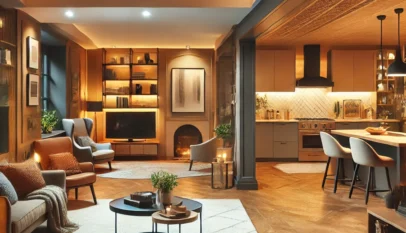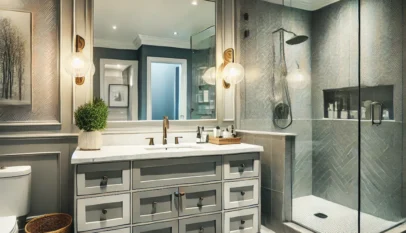
Designer kitchen cabinets are a crucial element in creating a functional and aesthetically pleasing culinary space. They not only enhance the overall style of a kitchen but also provide efficient storage solutions tailored to individual needs. With a wide range of materials, finishes, and styles available, these cabinets cater to diverse preferences and budgets.
Investing in designer kitchen cabinets can significantly elevate the value of a home. Sleek lines and custom designs often create a seamless integration with other kitchen elements, transforming the space into a focal point for both cooking and entertaining. Homeowners recognize that the right cabinets can improve organization and accessibility, making meal preparation more enjoyable.
Choosing the best designer kitchen cabinets requires careful consideration of style, durability, and functionality. Factors such as wood type, hardware, and layout can influence both aesthetics and usability. Understanding these aspects can lead to a well-designed kitchen that reflects personal style and meets practical demands.
Key Features of High-Quality Cabinets
High-quality kitchen cabinets are defined by their construction, functionality, and appearance. Attention to detail in materials and design elevates a kitchen’s usability and visual appeal.
Materials and Craftsmanship
The choice of materials is crucial for high-quality cabinets. Common options include hardwood, plywood, and MDF, each offering different durability and aesthetics. Hardwood provides natural beauty and longevity, while plywood offers strength with resistance to warping.
Craftsmanship is equally important. Cabinets should feature sturdy joinery, such as dovetail joints, which enhance durability. Finishes should be smooth, free from blemishes, and resistant to scratches. High-quality cabinets also incorporate high-grade hardware, like soft-close hinges and drawers, ensuring longevity and ease of use.
Functional Design Elements
Functional design elements make kitchen cabinets more efficient. Adjustable shelves allow for customized storage solutions, accommodating various items. Corner cabinets, when designed effectively, maximize space and improve accessibility.
In addition, built-in organization features, such as pull-out shelves or drawer dividers, can streamline kitchen tasks. Proper height and depth of cabinets also ensure ease of use. These elements contribute to a more organized kitchen, enhancing workflow and functionality while cooking and entertaining.
Aesthetic Considerations
Aesthetic considerations are essential in choosing high-quality cabinets. Style options range from contemporary to traditional, allowing homeowners to match their kitchen’s theme.
Finish choices, including stained wood or painted surfaces, contribute significantly to visual appeal. Details such as hardware style and cabinet doors—whether shaker, flat-panel, or raised-panel—play a role in the overall look. Color coordination with countertops and backsplash also enhances a cohesive kitchen aesthetic. Thoughtful design ensures that cabinets are not only functional but also visually pleasing.
Planning and Customization
Effective planning and customization are essential for achieving the ideal designer kitchen cabinets. Focusing on the layout, color choices, and personal style can significantly enhance the kitchen’s functionality and aesthetics.
Assessing Space and Layout
A careful evaluation of the kitchen space is crucial. This involves measuring dimensions, noting existing features like windows and doors, and identifying the flow of movement.
Designers often create a detailed floor plan to visualize where cabinets will be placed.
Considerations include:
- Height and Reach: Ensuring cabinets are accessible for all users.
- Storage Needs: Assessing how many items need to be stored and selecting sizes accordingly.
- Zoning: Planning different zones for cooking, prep, and social interaction to maximize efficiency.
Choosing a Color Palette
The color palette can transform the kitchen’s atmosphere. It’s important to select colors that complement the home’s overall design.
Popular choices often include:
- Neutral Tones: Whites, grays, or beiges offer versatility and timeless appeal.
- Bold Colors: Deep blues or vibrant greens can add character and serve as focal points.
To create harmony, consider pairing cabinet colors with countertops and backsplash tiles.
Elements like lighting also play a role in how colors appear, making it wise to test samples in different lighting conditions.
Incorporating Personal Style
Integrating personal style into cabinet design adds uniqueness. Homeowners should reflect on their preferences regarding materials, hardware, and finishes.
These choices can include:
- Material Variations: Wood, laminate, or metal each provide different aesthetics and durability.
- Hardware Selection: Knobs and handles in various styles, from modern to vintage, can enhance visual interest.
Personal touches, such as custom cabinetry shapes or specialized storage solutions, can also reflect one’s lifestyle.
Deciding on a cohesive theme can guide these choices, ensuring an inviting and personalized kitchen space.
House for Sale at Mississauga: Top Listings and Market Insights
Many buyers are interested in finding a house for sale in Mississauga due to its diverse n…









